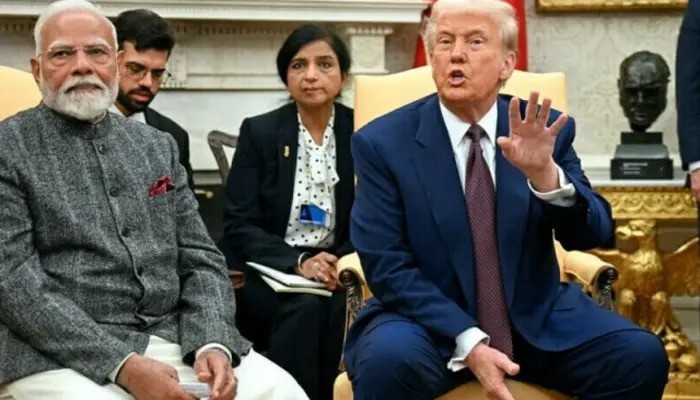A tense phone call over the India-Pakistan ceasefire has become the turning point in the sharp deterioration of US-India relations. The ceasefire dispute, which emerged during the June G7 summit, has triggered a series of political and economic actions that threaten decades of strategic partnership between the two democracies.
The Call That Sparked the Fallout
During the June G7 summit in Canada, Prime Minister Narendra Modi and President Donald Trump held a 35-minute phone conversation at Trump’s request. According to Indian officials, Trump claimed Washington deserved credit for brokering the May ceasefire after four days of clashes between India and Pakistan. Modi firmly rejected the claim, insisting the truce was arranged directly between New Delhi and Islamabad, and only at Pakistan’s request.
Indian Foreign Secretary Vikram Misri reiterated India’s stance, stating that the country has “never accepted mediation and never will.” This directly clashed with Trump’s version, in which he positioned himself as the broker of peace. Islamabad, however, has publicly supported Trump’s claim, saying Modi had approached the US for help.
Lunch Invitation Adds Fuel to the Fire
Tensions intensified when Modi learned that Trump planned to host Pakistan’s army chief, Field Marshal Syed Asim Munir, for lunch at the White House the very next day. Officials briefed on the matter revealed this moment as the breaking point in the already strained diplomatic exchange.
Diplomatic Invitation Declined
On June 17, Trump extended an invitation for Modi to attend a formal dinner at the White House. Modi declined, reportedly fearing that the event could be used to arrange an encounter with Field Marshal Munir. This refusal set the stage for a public and political escalation.
Read: Major Crackdown in Bannu: 14 Terror Facilitators Caught
Economic Retaliation Follows Political Clash
Weeks after the call, Trump announced an additional 25% tariff on Indian exports, citing concerns over India’s ongoing purchases of Russian oil. With some duties now set to reach 50%, India faces one of the toughest tariff regimes of any US trading partner. These tariffs, scheduled to take effect on August 17, could be avoided only if a trade agreement is reached beforehand.
At a recent press event, Trump criticized India’s economy as “dead,” accused New Delhi of maintaining “obnoxious” trade barriers, and condemned its neutral stance on the Russia-Ukraine war, claiming it showed disregard for Ukrainian losses.
A Strategic Partnership at Risk
This diplomatic breakdown represents a dramatic reversal from years of growing cooperation between Washington and New Delhi. The US and India have long seen each other as key allies in balancing Chinese influence across the Indo-Pacific.
Eric Garcetti, who served as US Ambassador to India until January, warned that decades of progress could be undone. “The carefully crafted consensus of successive administrations has brought the two largest democracies together for almost three decades,” he said. “The administration’s actions could endanger this progress if not resolved quickly. Cooler minds must prevail. There’s too much at stake.”
Silence from Both Capitals
Since the contentious June call, Modi and Trump have not spoken again. India’s Ministry of External Affairs has avoided public comment, while the White House has declined to clarify its role in the ceasefire or provide updates on the current state of relations.
US Stance on Trade Disputes
During a Thursday press briefing, State Department Deputy Spokesperson Tommy Pigott stated that Trump was “taking action to address concerns about trade imbalances and India’s continued purchases of Russian oil.” This statement reinforced Washington’s position that trade and geopolitical alignments are directly linked in its approach to foreign policy.
Outlook for US-India Relations
The ceasefire dispute has evolved into a multifaceted diplomatic and economic standoff. What began as a disagreement over credit for a military truce has now placed decades of bilateral cooperation at risk. Both countries must navigate a delicate path if they wish to preserve their long-standing strategic partnership. Without compromise, the rift could deepen further, affecting not only trade but also their shared regional objectives.
Follow us on Instagram, YouTube, Facebook,, X and TikTok for latest updates
